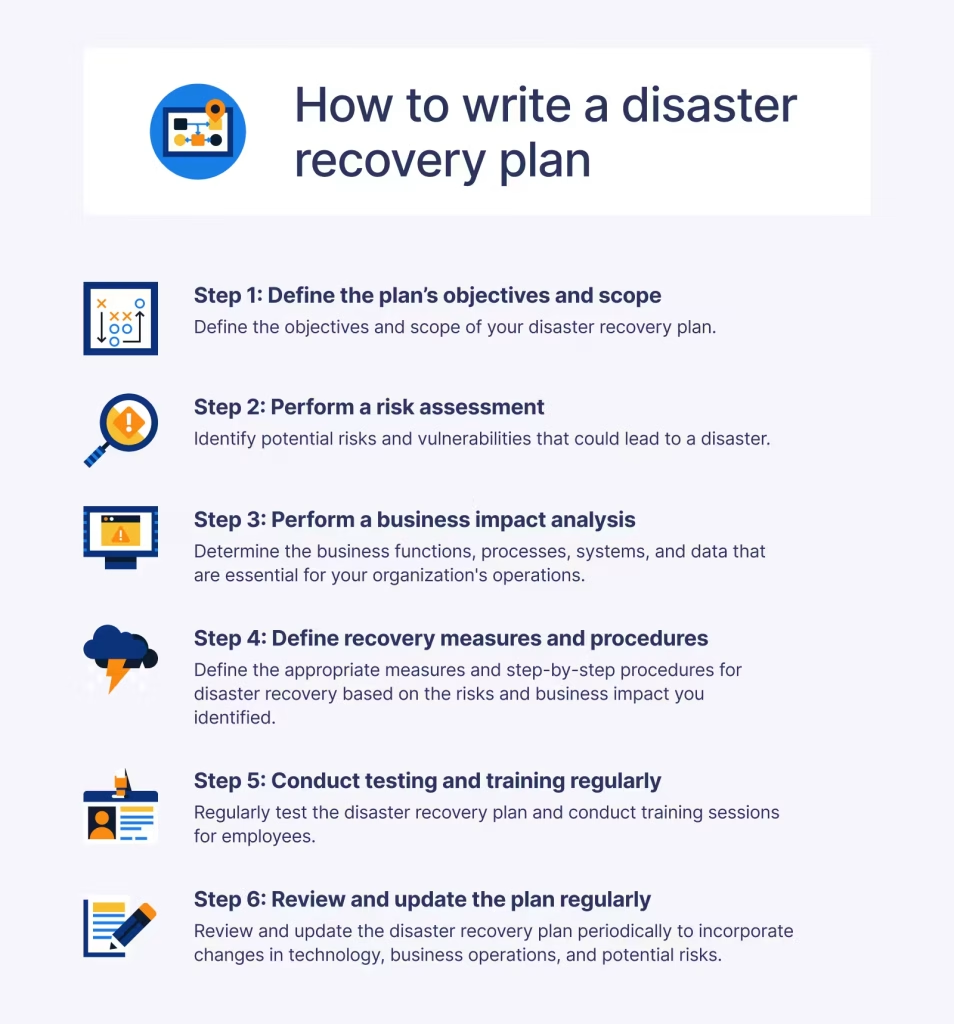Creating a Comprehensive Disaster Recovery Plan for Your Business
In today’s unpredictable world, businesses of all sizes face a myriad of potential threats, from natural disasters to cyberattacks. A well-crafted disaster recovery plan (DRP) is essential to ensure your organization’s resilience and minimize disruptions in the face of adversity. This comprehensive guide will walk you through the steps to create a robust DRP tailored to your specific needs.

Understanding the Importance of a Disaster Recovery Plan
A DRP outlines the procedures and strategies that your business will follow to recover from a disaster and resume normal operations. It serves as a roadmap, guiding your organization through the crisis and ensuring a swift and efficient recovery.
Key Benefits of a Disaster Recovery Plan:
- Business Continuity: A DRP helps maintain essential business functions during and after a disaster.
- Risk Mitigation: By identifying potential risks and developing contingency plans, you can reduce the impact of disasters.
- Regulatory Compliance: Many industries have specific requirements for disaster recovery planning.
- Investor Confidence: A well-prepared DRP can instill confidence in investors and stakeholders.
Developing Your Disaster Recovery Plan
1. Risk Assessment:
- Identify Potential Threats: Assess the risks your business faces, including natural disasters, cyberattacks, equipment failures, and human errors.
- Prioritize Risks: Determine the likelihood and potential impact of each threat.
- Evaluate Vulnerabilities: Identify your business’s weaknesses and areas that are most susceptible to disruption.
2. Business Impact Analysis (BIA):
- Critical Functions: Determine the essential functions and processes that must be restored first.
- Maximum Tolerable Downtime (MTD): Define the maximum amount of time your business can be operational before experiencing significant financial loss or damage to its reputation.
- Recovery Time Objective (RTO): Set a target for restoring critical systems and processes to operational status.
- Recovery Point Objective (RPO): Determine the maximum amount of data loss that your business can tolerate.
3. Develop Recovery Strategies:
- Backup and Recovery: Establish a robust backup and recovery plan, including regular backups of data and systems.
- Alternate Site: Identify an alternative location where your business can continue operations in case of a disaster.
- Technology Recovery: Plan for the recovery of hardware, software, and network infrastructure.
- Communication Plan: Develop a plan for communicating with employees, customers, and stakeholders during and after a disaster.
4. Testing and Maintenance:
- Regular Testing: Conduct periodic tests of your DRP to ensure its effectiveness.
- Updates and Revisions: Review and update your DRP as needed to reflect changes in your business or the threat landscape.
Key Components of a Disaster Recovery Plan
- Incident Response Plan: Outlines the procedures for responding to a disaster, including communication protocols, escalation procedures, and incident management.
- Data Backup and Recovery: Specifies the frequency, scope, and storage methods for data backups.
- Technology Recovery: Details the procedures for recovering hardware, software, and network infrastructure.
- Business Continuity Plan: Describes how your business will continue to operate during and after a disaster.
- Training and Education: Ensures that employees are trained on their roles in the DRP and understand their responsibilities.
Best Practices for Disaster Recovery
- Involve Key Stakeholders: Ensure that key personnel are involved in the development and testing of the DRP.
- Regular Testing: Conduct regular drills and exercises to evaluate the effectiveness of your plan.
- Continuous Improvement: Regularly review and update your DRP to address changing risks and requirements.
- Third-Party Verification: Consider having an independent third party review and validate your DRP.
Conclusion
A well-crafted disaster recovery plan is essential for protecting your business and ensuring its resilience in the face of adversity. By following the steps outlined in this guide, you can develop a comprehensive DRP that will help your organization recover quickly and effectively from any disaster.





Leave a Reply